Back in November 2002, a big row erupted about the felling of reportedly centuries-old trees to make space for the new-look O’Connell Street. It started as a mighty crane was due on site to raise the Spire of Dublin. Then someone mentioned the trees. . .
Suddenly, surly hacks who had probably driven over dozens of them were keening over homeless little wagtails. Protestors were chaining themselves to plane trees. Letter-writers were emoting over “Witness Trees . . . noble trees that were wounded during the Easter Rising and survived.” They spoke of “bullet holes” almost in terms of Christ’s stigmata. In the Dáil, a sorrowful Bertie Ahern agreed with Fine Gael’s Gay Mitchell that it was just awful.

In fact, the felling had been going on for 14 months before anyone seemed to notice. Many of the trees were spindly sidewalk or median specimens and when it came down to it, no one could really put a finger on what age they were. The fallen ones most probably did not include the Witness Trees. Anne Graham, project manager for the city council, had examined 1950s and 1960s photographs of the street’s southern end and discerned no trees there at all.
That left 10 trees at Upper O’Connell Street (opposite the Gresham) which might well have been the same as those in photographs from 1908. Graham said she would be happy to review the plan although it was hard to see how at that stage.
Plans
Reading all this now, an outsider might conclude that Dublin City Council planners had sprung a shocking surprise on senior politicians, councillors and media. But it was clear from the line drawings that the formal arrangements of small trees would have to entail mass felling. The caption even specified “formal tree-planting throughout”. The project’s success depended on drawing the pug-ugly, near-derelict northern end of the street back into the city’s heart by way of a uniform flow of trees and more generous pedestrian space from one end to the other.
There would 200 new trees to replace the old 50, a new plaza in front of the GPO, wider footpaths, slatted-wood-and-glass kiosks for the medians. And those plans had been circulated all of four years beforehand and duly adopted by the city councillors. In short, the politicians – never mind the general public – had not been paying attention until someone mentioned trees.
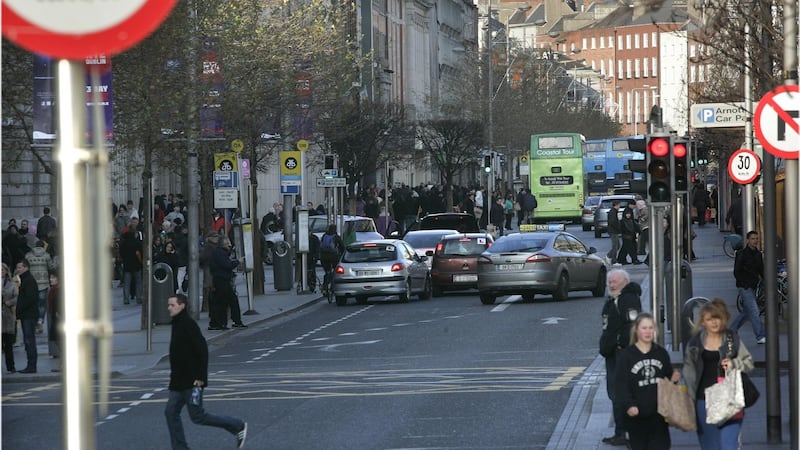
That row came to mind on Monday when Olivia Kelly wrote of the council's many costly, futile attempts to raise O'Connell Street's woeful image. At least the trees furore served the purpose of triggering an informative if belated debate about the nation's main thoroughfare. We might have learned lessons from that. But as recently as 10 years ago and only by sheer luck, O'Connell Street just managed to escape what the council's chief executive, Owen Keegan, has dubbed "Dundrum shopping centre mark two" which had been planned for the massive Carlton Cinema site. The outer manifestation of the six-acre site just past the GPO can be identified by its ugly gaps, one of them vacant for all of 40 years, garnished by the Goodtime Emporium amusement arcade.
The fact is that few Irish people willingly set foot on O’Connell Street or get a close-up of it from anywhere but a taxi or the top of a bus so they tend to avert their gaze. The shameful chicanery around the closure of Clery’s – once the capital’s pre-eminent department store across the street from the GPO – caused a flurry of public interest. Hands up anyone who has kept track of its fate?
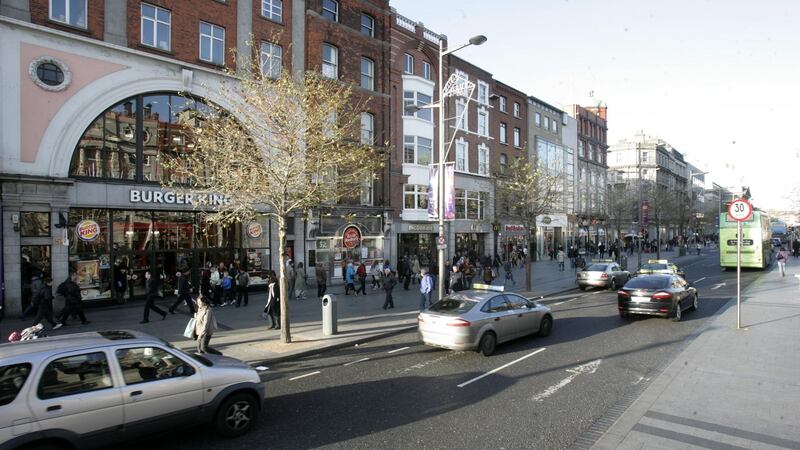
Dereliction
As a reporter, several of my Easter Sunday mornings were occupied reporting on the annual Rising commemorations at the GPO, observing Defence Forces personnel marching past in tight formation down the street, the national colours being lowered to half mast, the old tug of emotion during the reading of the 1916 Proclamation – all horribly discordant with the ugly barriers and obtrusive viewing galleries, the tat, tawdriness and dereliction, the impulse to chase after unwary tourists and warn them not to wander that way alone. Plus the nagging sense that in this street named after the Liberator, a man able to summon up crowds of hundreds of thousands and fire them up without drawing a drop of blood, surely another way could be envisaged to commemorate all those remarkable figures of peace such as O’Connell, Grattan, Parnell, Redmond, who had also helped to deliver Irish nationhood.
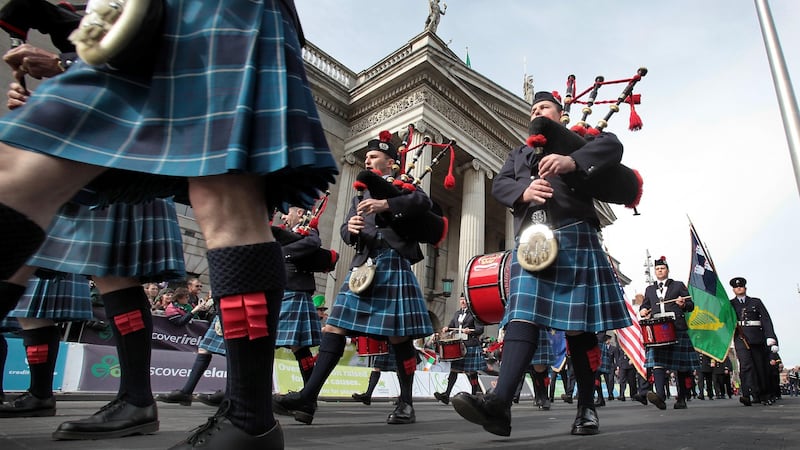
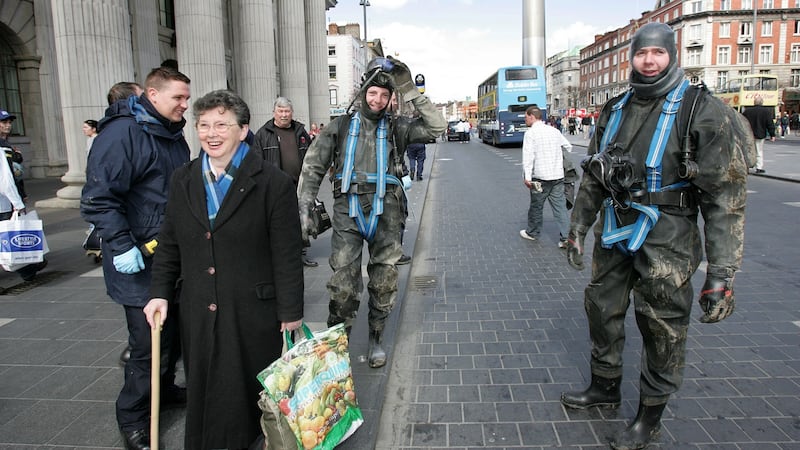
We need to get agitated about O’Connell Street and its uses again. A new plan for the Carlton site from a UK developer would see the historic street pattern restored, a new east-west pedestrian street between O’Connell Street and Moore Street, two new civic squares, shops, offices, apartments, a hotel and metro station.
Central to the scheme is a “historical trail” to commemorate 1916 Rising events and locations through the site.
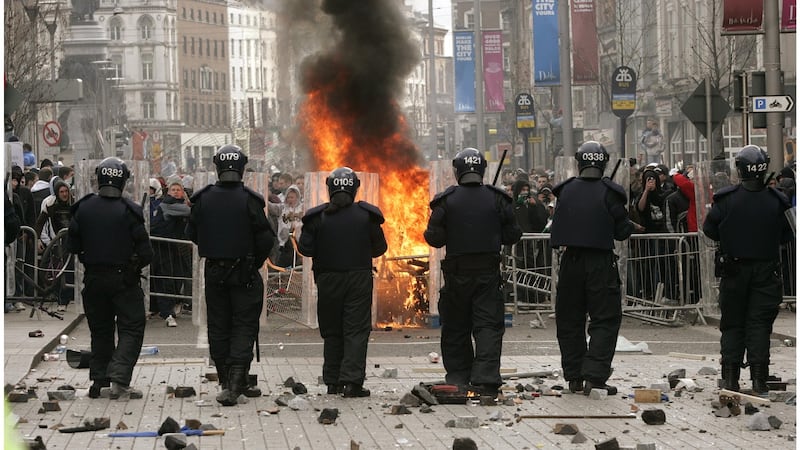
It sounds good. But the danger lies in the temptation to settle for something that is better than the existing dereliction. O’Connell Street deserves the very best this country has to offer in design, creativity and craftsmanship. Above all, it deserves the deepest national respect. When conservationists are urging caution, we should listen.














